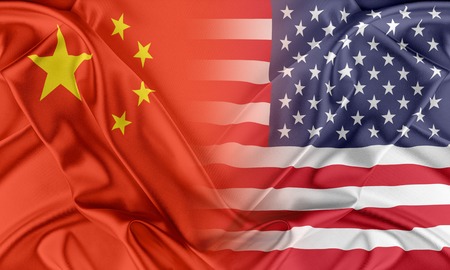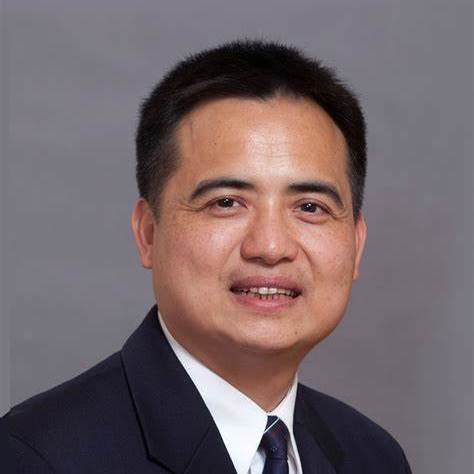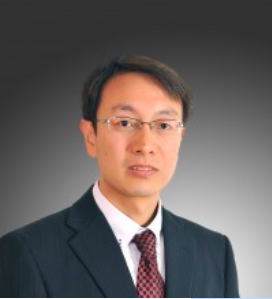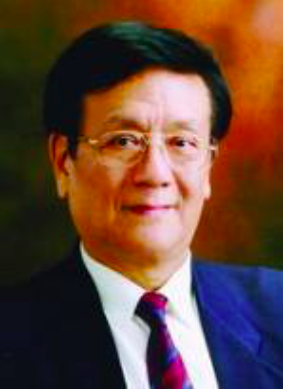“In a number of fields, such as e-commerce, China has arguably become one of the leading innovators in the world. Although the Chinese Patent Law has yet to be amended for the fourth time since it was first enacted in 1984, recent changes have been made to China’s Guidelines for Patent Examination to accommodate the needs of fast-developing new technology.”
 Over 15 years ago, as a Ph.D./J.D. student, I learned that the U.S. Congress intended patent-eligible subject matter to broadly include “anything under the sun that is made by man” when enacting the 1952 Patent Act, and that two cases, Diamond v. Chakrabarty, 447 U.S. 303 (1980) and Parke-Davis & Co. v. H.K. Mulford Co., 189 F. 95 (C.C.S.D.N.Y. 1911), had paved the way for the United States to become the world leader on biotechnology innovation.
Over 15 years ago, as a Ph.D./J.D. student, I learned that the U.S. Congress intended patent-eligible subject matter to broadly include “anything under the sun that is made by man” when enacting the 1952 Patent Act, and that two cases, Diamond v. Chakrabarty, 447 U.S. 303 (1980) and Parke-Davis & Co. v. H.K. Mulford Co., 189 F. 95 (C.C.S.D.N.Y. 1911), had paved the way for the United States to become the world leader on biotechnology innovation.
Later, as a law firm associate (2005-2010), I happened to work on invalidity contentions based on prior art against U.S. Patent Number 6,355,623, the patent-in-suit in Mayo Collaborative Services v. Prometheus Laboratories, Inc., 566 U.S. 66 (2012) which was held patent-ineligible by the U.S. Supreme Court in 2012, and studied U.S. Patent Number 6,258,540 covering the pioneering discovery made by Dr. Dennis Lo on prenatal diagnostic uses of cell-free fetal DNA at the Chinese University of Hong Kong and licensed to our then-client Sequenom, which was held patent-ineligible by the Federal Circuit in Ariosa Diagnostics, Inc. v. Sequenom, Inc., 788 F.3d 1371 (Fed. Cir. 2015) based on Mayo in 2015.
Obviously, the sun is still the same sun, but much has happened to the patent subject matter eligibility standard in the U.S. since Mayo. On April 27, 2020, Judge Paul Michel and John Battaglia published an excellent article on IPWatchdog analyzing the U.S. Section 101 patent subject matter eligibility jurisprudence. In that article, Judge Michel and Battaglia reminded judges and practitioners to reference “the more-favorable foreign patent laws on the patent eligibility for diagnostic testing, business methods and software … in countries such as England, China, or the European Union … to inform such a judicially created ineligibility standard, as opposed to the U.S. Constitution or a federal statute.” Here, we take a quick comparative look at the current patent subject matter eligibility standard in China.
Chinese Law on Patentable Subject Matter and Recent Amendments to Patent Examination Guidelines
The following three provisions of Chinese Patent Law, in relevant part, provide the statutory framework for what constitute patentable subject matter in China.
First, Article 2.2 of Chinese Patent Law provides, “Invention in the Patent Law refers to any new technical solution concerning a product, process, or improvement thereof.”
Second, Article 5.1 of Chinese Patent Law provides, “No patent shall be granted for an invention that contravenes any law or social morality or that is detrimental to public interests.”
Third, Article 25 of Chinese Patent Law provides:
No patent rights shall be granted for any of the following: (1) Scientific discoveries; (2) Rules and methods for intellectual activities; (3) Methods for the diagnosis or for the treatment of disease; (4) Animal and plant varieties; (5) Substances obtained by means of nuclear transformation; and (6) Designs of two-dimensional printing goods, made of the pattern, the color, or the combination of the two, which serve mainly as indicators.
The patent right may, in accordance with the provisions of this Patent Law, be granted for the production methods of the products specified in (4) above.
In short, similar to the U.S. Patent Law in 35 U.S.C. Section 101, Chinese Patent Law broadly defines patentable subject matter in its Article 2.2 as “any new technical solution … or improvement thereof.” Unlike U.S. Patent Law, Chinese Patent Law mirrors TRIPS Article 27 by statutorily providing an ordre public or morality exclusion in its Article 5.1, and a number of specific exclusions in its Article 25.1, including not only scientific discoveries and rules and methods for intellectual activities, which are similar to the three judicially created exceptions in the United States (i.e., laws of nature, natural phenomena, and abstract ideas), but also methods for the diagnosis or for the treatment of disease.
Thus, looking at the Chinese patent statute alone, which was last amended in 2008, it’s not clear Chinese Patent Law is more favorable than U.S. Patent Law on the patent eligibility for diagnostic, fintech, and software patents. In fact, one could argue it’s less favorable given the express exclusions found in its patent statute, as opposed to the implied judicial exceptions under U.S. Patent Law.
This is not entirely unexpected, because, certainly in 2008, China was lagging behind the U.S. on innovation in various technology fields, and its domestic industry did not have as much invention to be protected by a robust patent system. Understandably, because China’s patent system was perceived to be weaker than those in the more developed countries, many patent applicants chose not to file patent applications in China. For example, although Dr. Lo was awarded U.S. Patent Number 6,258,540 in 2001 for his pioneering discovery on non-invasive prenatal diagnosis, no counterpart patent application was filed in China for this ’540 patent.
However, times have changed; the innovation level in China has been increasing. In a number of fields, such as e-commerce, with exemplary global enterprises like Alibaba and Tencent, China has arguably become one of the leading innovators in the world. Although the Chinese Patent Law has yet to be amended for the fourth time since it was first enacted in 1984, recent changes have been made to China’s Guidelines for Patent Examination (“Guidelines”) to accommodate the needs of the fast-developing new technology and the requests from domestic innovation entities: On September 23, 2019 and December 31, 2019, the China National Intellectual Property Administration (“CNIPA”), publicly announced certain changes to the Guidelines, which became effective on November 1, 2019 and February 1, 2020 (the “November 1, 2019 Amendment” and “February 1, 2020 Amendment”, respectively). Next we look at these two recent amendments, focusing on where patent subject matter eligibility may be impacted, and briefly discuss the patent eligibility of diagnostic and treatment methods in China.
November 1, 2019 Amendment to China’s Guidelines for Patent Examination: Human Embryonic Stem Cells Are Now Patent-Eligible
The CNIPA began its public announcement on the November 1, 2019 Amendment as follows, “To serve the need of fast-developing new technology, respond to new requests from innovation entities on patent examination rules and methods, and improve patent examination quality and efficiency, CNIPA decides to amend the Guidelines for Patent Examination.”
Regarding patent subject matter eligibility, the November 1, 2019 Amendment includes an important change on the patent-eligibility of certain human embryonic stem cells. Thus, in Part II, Chapter 1, Section 3.1.2 Inventions-creations Contrary to Social Morality, the following has been inserted into the Guidelines:
However, if an invention is to separate or to obtain stem cell from a human embryo which is within 14 days of fertilization and has not gone through in vivo development, it should not be rejected on the basis of violation of social morality.
And in Part II, Chapter 10, Section 9.1.1 Examination of Subject Matter According to Article 5, the following deletions/insertions have been made to the Guidelines:
9.1.1.1 Human embryonic stem cells
No patent shall be granted for human embryonic stem cells or a preparation method thereof in accordance with the provision of Article 5.1.
9.1.1.21 Human Body at any Stage of Formation or Development
Human body at any stage of formation or development, including human’s reproductive cells, fertilized eggs, embryos, and individuals, falls under the patent-ineligible inventions under Article 5.1. Human embryonic stem cells are not human bodies at any stage of formation or development.
Accordingly, stem cells obtained from a human embryo which is within 14 days of fertilization and has not gone through in vivo development and methods for preparing the same have become patent-eligible in China since November 1, 2019.
In contrast, the patentable subject matter in the United States has long covered stem cells, including human embryonic stem cells first patented by WARF (Wisconsin Alumni Research Foundation) in 1998. However, because of Mayo and Association for Molecular Pathology v. Myriad Genetics, Inc., 569 U.S. 576 (2013), what constitutes patentable subject matter with respect to stem cells in the United States has become less certain than before.
February 1, 2020 Amendment to China’s Guidelines for Patent Examination: Clarifying Examination Rules for Patent Applications in Areas such as Artificial Intelligence, Internet+, Big Data and Block Chain
Similar to the November 1, 2019 Amendment, the February 1, 2020 Amendment was also made by the CNIPA to provide stronger intellectual property rights protection and respond to the needs of innovation entities on clarifying patent examination rules in new fields such as artificial intelligence.
Specifically, the February 1, 2020 Amendment added a new Section 6 to the end of Part II, Chapter 9, Some Provisions on Examination of Invention Applications Relating to Computer Programs. The new Section 6 is partially translated as follows:
Section 6. Examination Rules for Invention Patent Applications Containing Algorithms or Business Rules and Methods
Invention patent applications relating to artificial intelligence, “Internet +”, big data and block chain usually contain intellectual activities such as algorithms or business rules and methods. This Section intends to address the particularity of examining these kinds of applications based on the Patent Law and its Implementing Regulations.
6.1 Examination Criteria
Examination shall focus on the technical solution that is seeking protection, i.e., the technical solution described by the claims. During examination, the technical features, algorithm features, or business rules and methods features shall not be separated; all the contents of a claim shall be treated as a whole, while examining the technical solution, technical problem, and technical effects described by the claim.
6.1.1 Examination Based on Article 25.1(2)
If a claim concerns an abstract algorithm or pure business rules and methods, and does not contain any technical feature, then it’s a claim falling under Article 25.1(2) rules and methods for intellectual activities, and thus not patent-eligible. For example, a mathematical model building method that is based on an abstract algorithm and does not contain any technical feature will fall under Article 25.1(2) and not be patent-eligible. For another example, a method to provide rebate to user based on the user’s spending, all features of which method concern business rules and methods relating to the rebate method, which contains no technical feature, is a method falling under Article 25.1(2) and not patent-eligible.
If a claim contains technical feature, in addition to algorithm or business rules and methods feature, the claim viewed as a whole is not a rule and method for intellectual activities, and will not be excluded from patent eligibility based on Article 25.1(2).
6.1.2 Examination Based on Article 2.2
If a claim as a whole does not fall under Article 25.1(2), then next it shall be examined to see if it is a technical solution under Article 2.2.
While examining whether a claim containing algorithm feature or business rules and methods feature is a technical solution under Article 2.2, all features contained in the claim shall be considered as a whole. If the claim describes a technical means that utilizes laws of nature to address a technical problem, and obtains a technical effect that fits the laws of the nature, then the technical solution described by the claim is a technical solution under Article 2.2. For example, if a claim contains an algorithm comprising steps which are closely related to the technical problem to be solved, such as the data being processed by the algorithm are data that have definite technical meaning, and the execution of the algorithm can directly demonstrate the process of utilizing laws of nature to solve a technical problem and obtain a technical effect, then usually the technical solution described by the claim is a technical solution under Article 2.2.
…
At present, it would seem a practical application in the fields of fintech and software-related inventions, with properly drafted claims, would be patent-eligible whether examined by the USPTO under its October 2019 Patent Eligibility Guidance Update, or examined by CNIPA under its February 1, 2020 Amendment to the Guidelines. Empirically, that has been our firm’s experience as well: Although several years ago there was a period during which we encountered patent eligibility issues at CNIPA for some patent applications of our U.S. clients, it hasn’t been an insurmountable issue since then.
Patent Eligibility for Diagnostic and Treatment Methods in China
According to Chinese Patent Law and the corresponding Guidelines for Patent Examination, diagnostic and treatment methods (including surgical methods) per se, whether practiced on humans or animals, are not eligible for patent protection in China. However, they can usually be redrafted into product claims and/or Swiss-type claims and enjoy patent protection. For example, the following claim is not patent-eligible in China:
Method for treating disease X, comprising administering substance Y to a patient in need thereof.
But they are patent-eligible if redrafted in the following forms:
Compound/composition Y for use in treatment of disease X, …… (Note: This is an acceptable product claim only if Compound Y is novel; otherwise, the next two claim forms should be used)
or
Use of a compound/composition Y in the manufacture of a medicament for the treatment of disease X.
or
Use of a substance/component Y in the manufacture of an apparatus/kit for the diagnosis of disease X.
Evolving Standards
In summary, although China’s patent eligibility standard may not have become more favorable than that in the United States yet, it’s clear that it has become more favorable in the past decade, while the U.S. trend during the same period has generally been opposite, with the exception of what the USPTO has done under the leadership of Director Andrei Iancu since he took office in 2018. As world citizens, we sincerely hope human ingenuity, wherever it is under the sun, continues to flourish with inventions that improve the living standard of mankind, whether in the United States, China, Europe, or other regions, and that patent systems all over the world continue to be optimized to “promote the Progress of Science and useful Arts,” as envisioned by the Founding Fathers in the U.S. Constitution in 1787.
Image Source: Deposit Photos
Author: ruskpp
Image ID: 10094682

![[IPWatchdog Logo]](https://ipwatchdog.com/wp-content/themes/IPWatchdog%20-%202023/assets/images/temp/logo-small@2x.png)






![[Advertisement]](https://ipwatchdog.com/wp-content/uploads/2024/04/Artificial-Intelligence-2024-REPLAY-sidebar-700x500-corrected.jpg)
![[Advertisement]](https://ipwatchdog.com/wp-content/uploads/2024/04/UnitedLex-May-2-2024-sidebar-700x500-1.jpg)
![[Advertisement]](https://ipwatchdog.com/wp-content/uploads/2024/04/Patent-Litigation-Masters-2024-sidebar-700x500-1.jpg)

![[Advertisement]](https://ipwatchdog.com/wp-content/uploads/2021/12/WEBINAR-336-x-280-px.png)
![[Advertisement]](https://ipwatchdog.com/wp-content/uploads/2021/12/2021-Patent-Practice-on-Demand-recorded-Feb-2021-336-x-280.jpg)
![[Advertisement]](https://ipwatchdog.com/wp-content/uploads/2021/12/Ad-4-The-Invent-Patent-System™.png)






Join the Discussion
5 comments so far.
Pro Say
June 13, 2020 10:07 amThank you for the interesting and insightful article.
Following up on Paul @ 1:
Could you please provide us with a feel for how computer / internet / software type inventions fare in China vs U.S.; for those patents which are applied for in both countries?
Are such inventions receiving China patents but not U.S. patents?
Do you (or any readers) have actual statistics?
Thank you.
MaxDrei
June 13, 2020 08:41 amSorry, but something is not clear to me. You write:
Chinese Patent Law broadly defines patentable subject matter in its Article 2.2 as “any new technical solution … or improvement thereof.”
Let us focus on the word “technical”.
Putting to one side the issue of patentability of software, suppose I definitely claim hardware that plausibly solves a problem, as explained in more than enough detail in the specification (which thus enables the invention over the full scope of the claim). Further, the argument that the solution is obvious is unconvincing. The problem for the Applicant is simply that the problem solved is deemed not to be “technical”.
In such a case, how does the Patent Office in China frame the objection? Is it that the claimed subject matter is not eligible? Or is it (like at the EPO) that the claimed subject matter is not patentably inventive (because no inventive activity can be identified, that lies within a field of technology)?
Clarification please.
Anon
June 13, 2020 08:38 amOne huge difference: the US Sovereign does NOT have a “technical arts” basis, but instead, and sharply contrasting (no matter how often certain individuals attempt to obfuscate the difference), the US Sovereign has a wider Useful Arts basis.
Notwithstanding the mucking things up by the Court, the US Sovereign does not have to rely on any type of ‘per se’ and ‘as such’ wiggle words (as in Europe) or in addendums provided in the story above (as in China).
Any comparative piece MUST also acknowledge the fact that the US law (as written by Congress) and the US law (as RE-written by the Court) may not be in alignment and comparisons SHOULD note the basis of comparison to the true US law.
André Schumacher
June 12, 2020 02:01 pmThe Technical blackhole.
Paul Morinville
June 12, 2020 01:37 pmAs has been clearly shown in the US government, the plain black and white letters of law say one thing and the courts do another.
What are the actual results between the two systems? It seems there must be a significant number of patents allowed in China and defended in China, that have been invalidated in the US. What are those patents? Invalidating them in the US protects who?